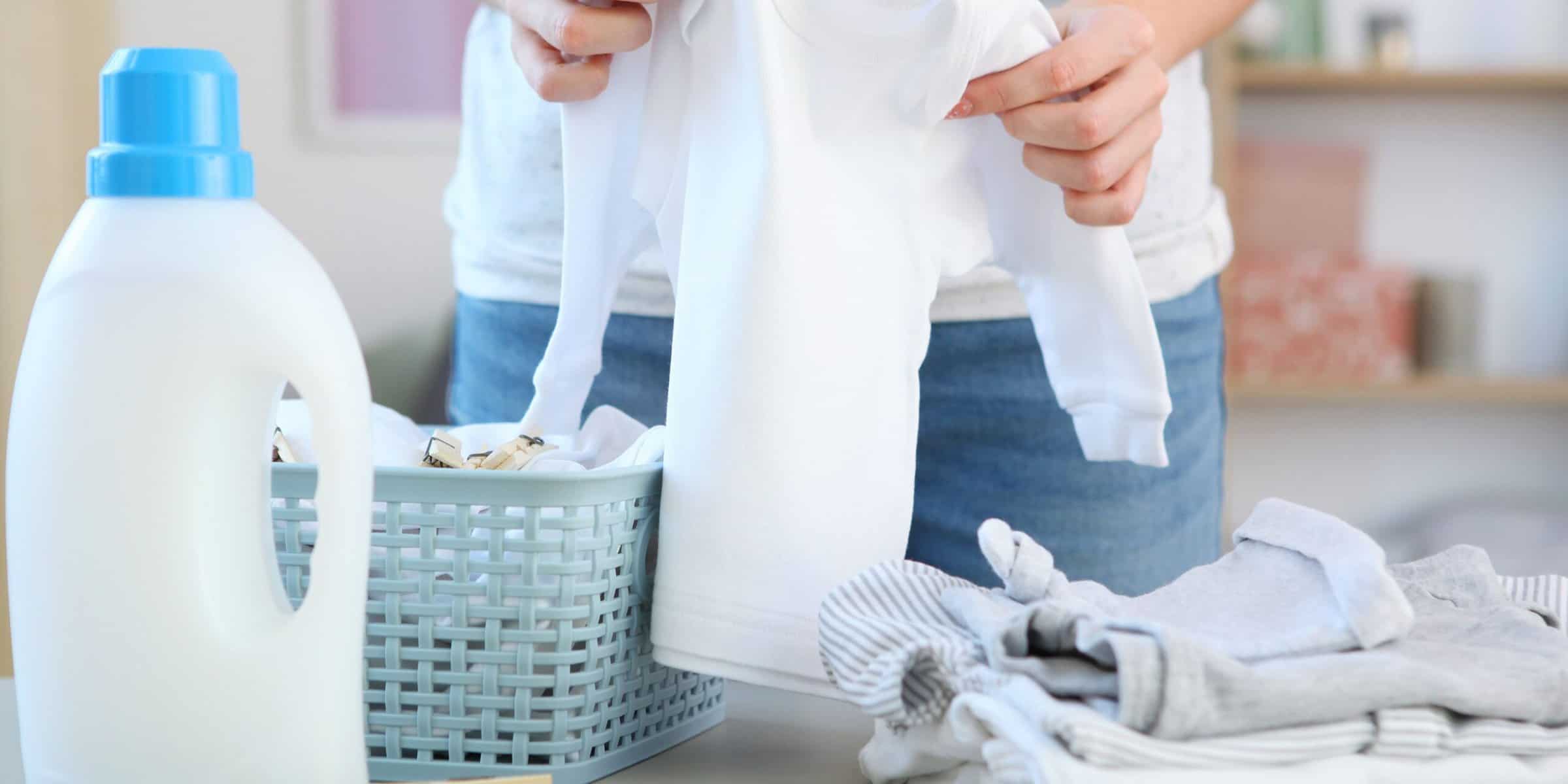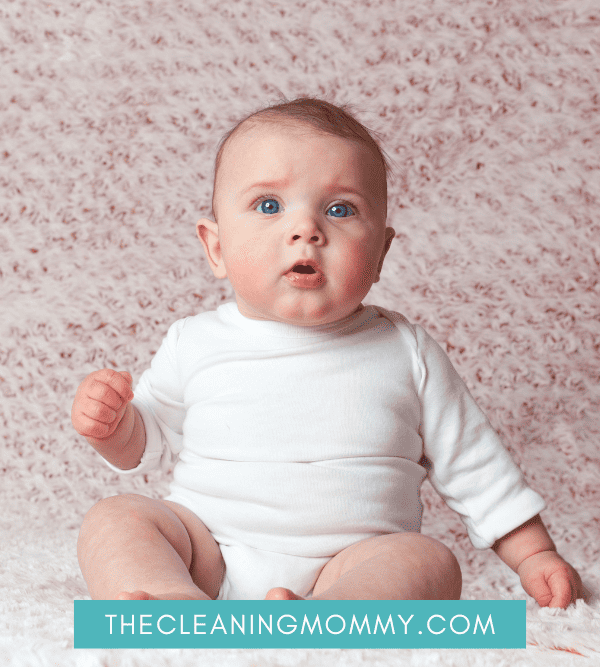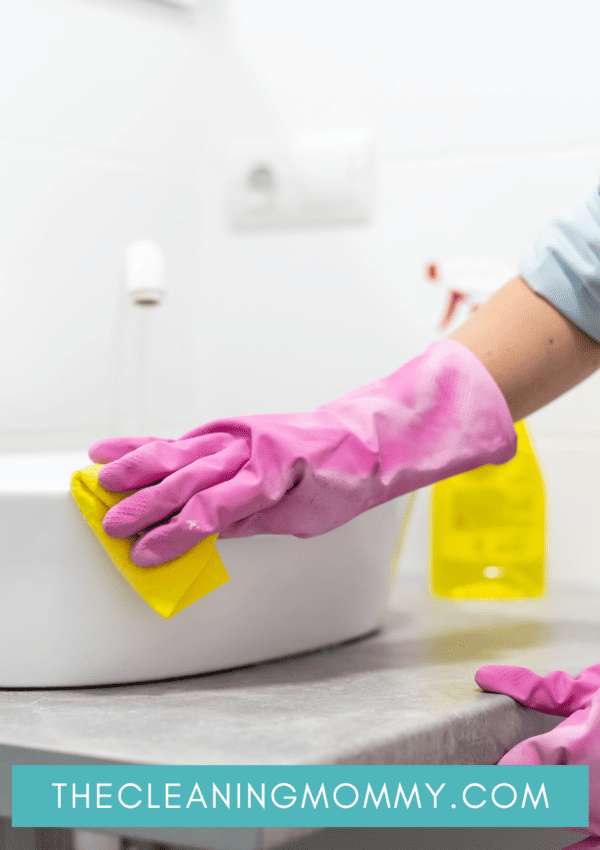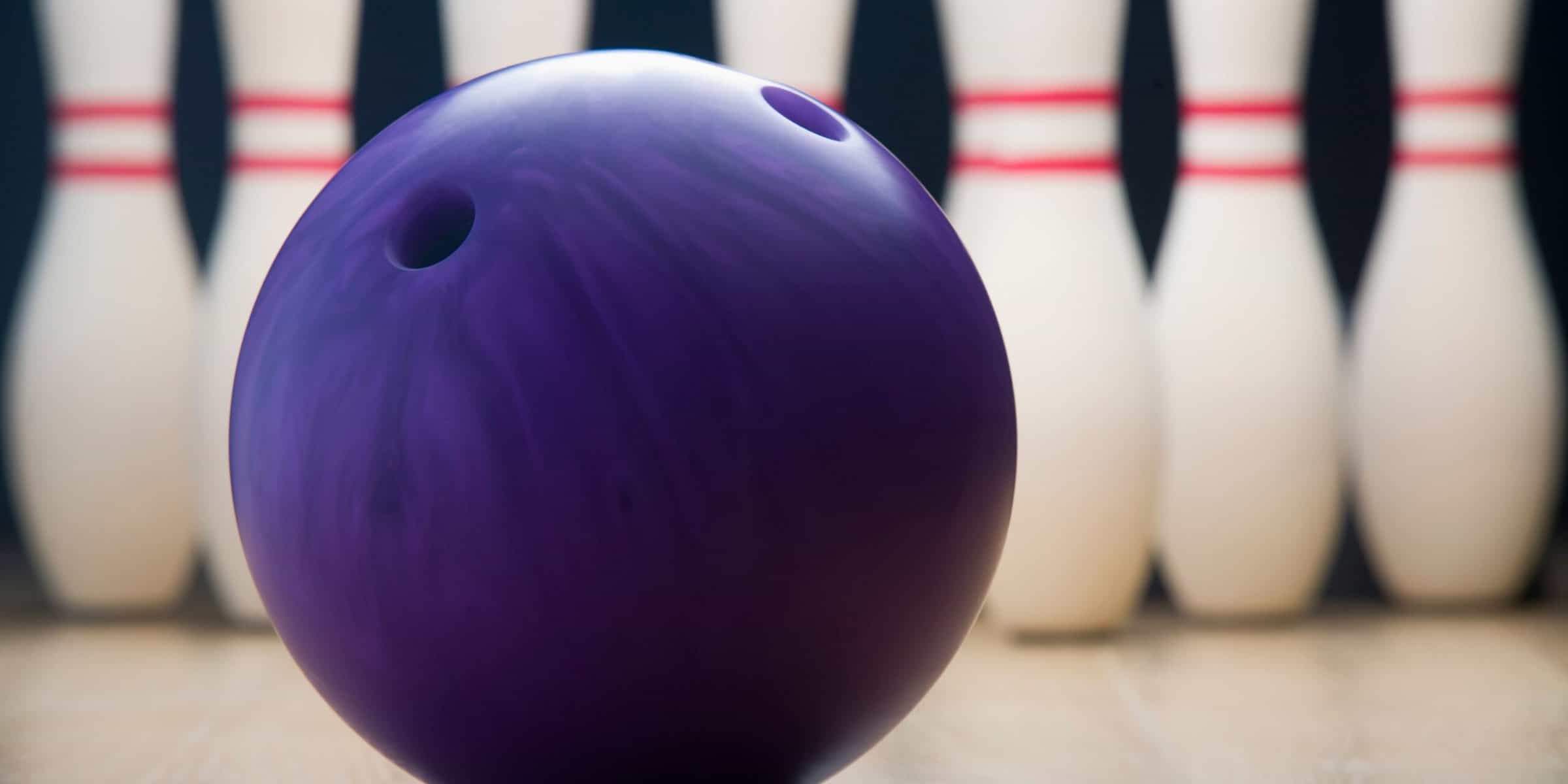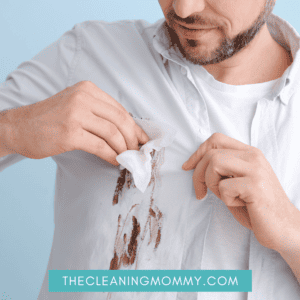Are you looking to find out how to wash clothes with poop on them? If you’re wondering how to remove poop stains from clothes, you’ve come to the right place!
It’s not exactly a fun topic to talk about, but it is necessary
Whether your baby had a severe diaper blowout, or your pet left an unpleasant surprise in the laundry room, or you or someone in the family fell ill with a bad case of diarrhea – I’ve got you covered!
My best tips on removing poop from clothing will work wonders in any situation.
The best way to wash clothes with poop on them is to remove the excess excrement, presoak, apply stain remover, wash, repeat as needed and dry. This process will ensure that your clothes will come out stain free.
With our easy-to-follow steps, you’ll have your dirty clothes germ-free, stain-free, and smelling fresh again in no time!
So let’s jump right in and figure out how to get poop stains out of clothes.
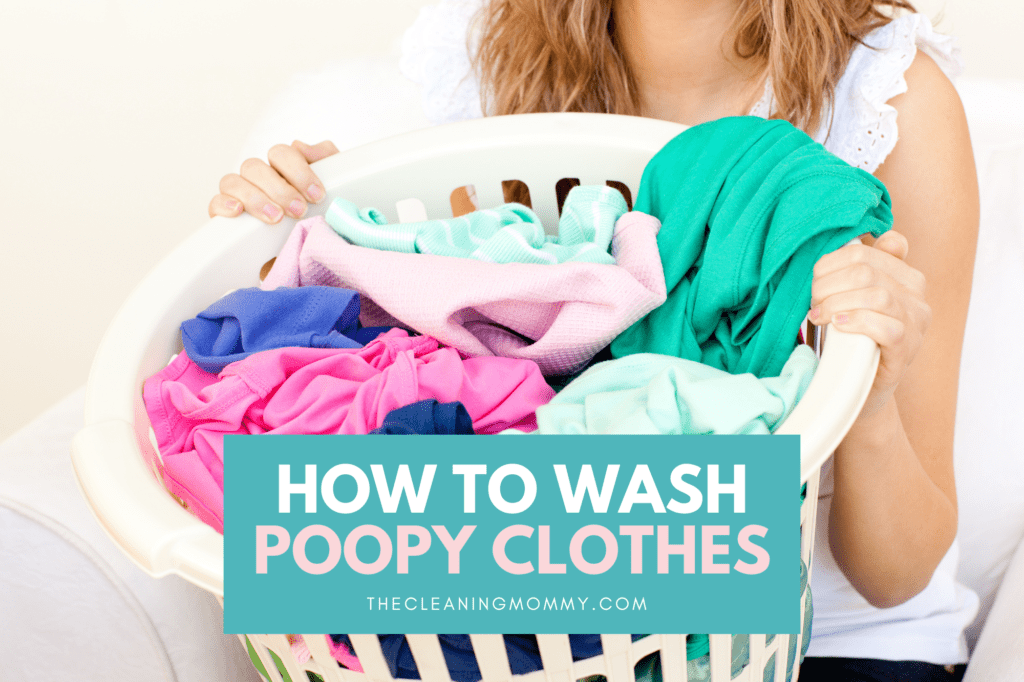
How to Wash Clothes With Poop on Them
Now that we know what we are dealing with and why it’s so important to properly clean your stained fabric let’s take a look at how to get poop stains off clothes the right way.
What you will need to remove poop stains from clothes
Here’s a list of the things that you’ll need:
- Cleaning gloves
- A bucket, basin, or tub
- Two disposable plastic bags
- Cleaning cloths or paper towels
- Hot water
- A laundry stain remover containing enzymes
- Your regular laundry detergent
- Chlorine bleach or white vinegar
Instructions
The best way to remove a poop stain from clothes is to follow these steps:
Step 1: Remove The Excess Poop
Remove as much of the excess feces as you can from your soiled clothing before you start washing. This will make poop stain removal a lot more manageable and your clothes a lot easier to clean. You can either use some kind of water pressure, like a hose, or remove them by hand with some rubber gloves and a doggy/plastic bag.
If you do it by hand, remember not to rub it too harshly. You do not want to push the waste further into the material. I try to do some of this over the toilet bowl with toilet paper, so the poop has a place to fall!
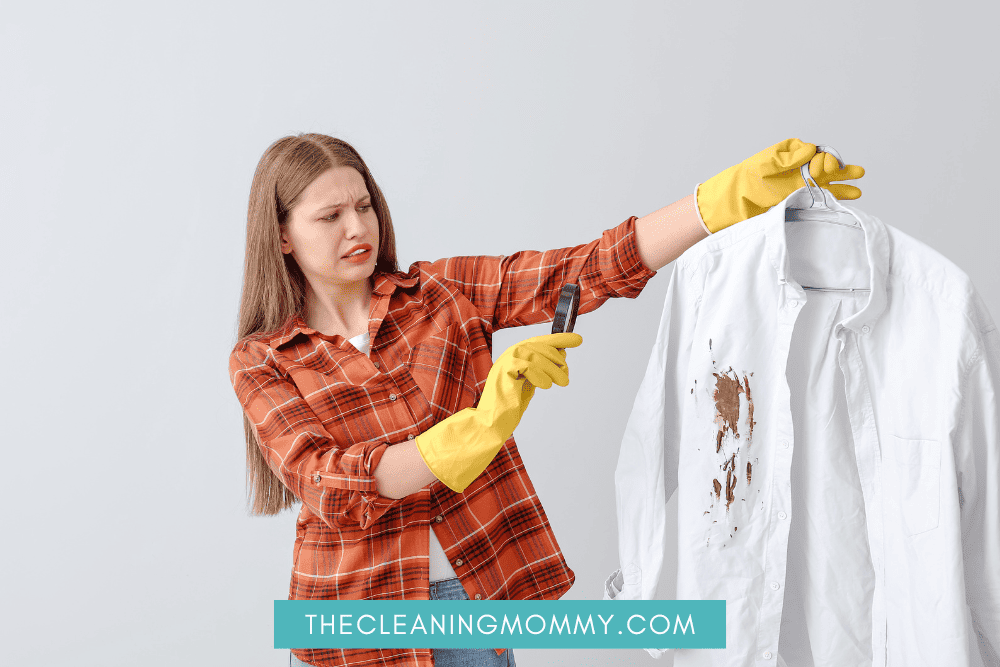
Step 2: Pre-Soak The Garment
Soak the soiled clothing items for about 30 minutes in a bucket of cold water before applying the stain remover. You don’t want to wash clothes soiled in the washing machine!
This helps soften the poop and makes it easier to remove. The soiled clothes should be fully submerged for the best results.
If it is not possible to submerge the clothing piece underwater, you can try using a spray bottle to add water to the affected area.
Remember you want to try to remove as much poop as you can before putting the clothes into the washing machine!
Step 3. Apply Stain Remover
This is not a well-known fact, but poop contains proteins. Because of this, you’ll need to pre treat stains using an enzymatic cleaner to break down the proteins. You have the option to either use enzymatic stain removers that have bleaching agents added to them, or you can use a separate bleaching agent afterward.
Now, remove the garment from the water bucket, put it in a separate basin or bucket, and add the enzymatic cleaner to the stained area. Let the fabric sit for a few minutes, depending on the recommended time specified by the manufacturer’s instructions.
This will allow the product to soak into the fabric’s fibers and will give the best stain-removing results. In breaking down the stain it will also eliminate any poop smell that may linger. If there are no recommendations, you can let it set for 10-15 minutes or even several hours if you are busy.
Tip: If you have a cleaning brush, you can start scrubbing the detergent into the clothing piece.
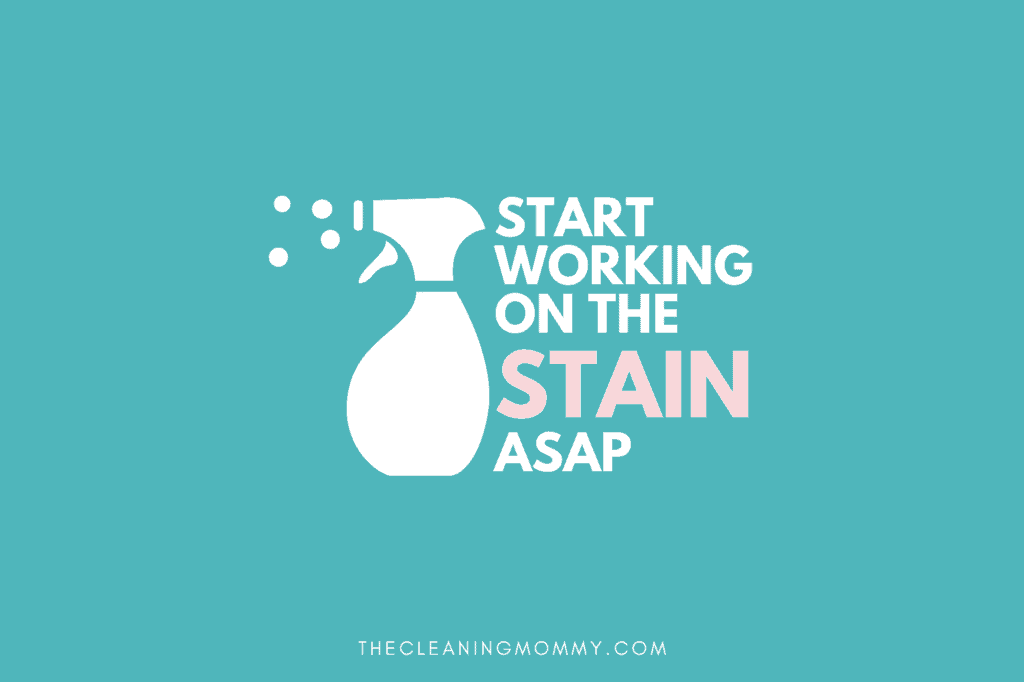
Step 4: Wash The Garment
After adding the cleaning agent, it’s time to wash your clothes. You can add your clothes to the washing machine. Remember to only add clothes that have already been contaminated with poop, like the baby’s clothing, kid’s underwear, or whatever other fun accidents you are dealing with! Remember to drain the excess water out of the clothes before you put them in the actual wash!
You should never put poopy clothes in the same load as regular clothes; if you do, you run the risk of spreading the bacteria, especially if someone is sick.
If you used an enzyme cleaner without a bleaching agent in the previous step, you can add the recommended amount of bleach and your normal washing detergent. Bleach is added to kill the germs.
If you do not have bleach on hand, you can use white vinegar instead. Take note that you should never mix the two ingredients because they can create chlorine gas.
For the most effective germ removal, it is advised to use your washing machine’s hottest water temperature setting.
Step 5: Check For Stains
After the washing cycle has been completed, check to see if there are any remaining stubborn stains! If the stain disappears, go ahead and dry the garment. If the stain does leave marks, repeat the washing process again using a warm water setting, normal spin speed, and adding your liquid laundry detergent.
Again, you can add the recommended amount of bleach or white vinegar and then run the washing machine with an extra rinse cycle.
Step 6: Dry Your Clothes
Once none of the stain remains, allow your clothes to dry using your method of choice. High temperature is one of the best ways to kill germs, so allow your clothes to either air dry in the sun or use a tumble dryer for a fair amount of time to ensure that all the germs are killed.
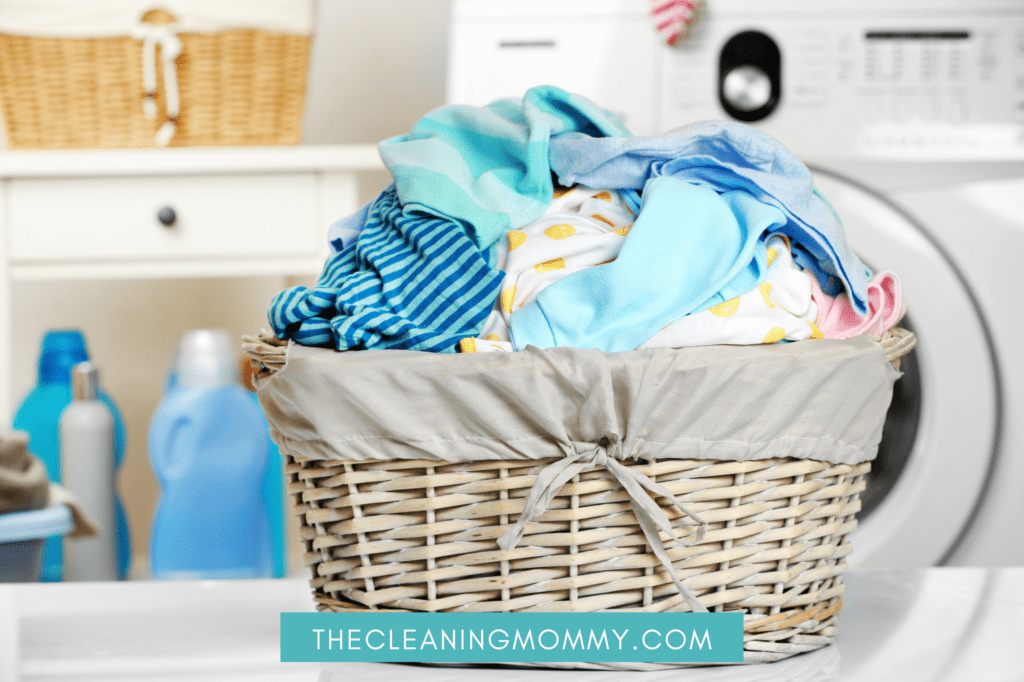
How to Clean Diarrhea From Clothes
Okay, prepare to be grossed out! Diarrhea stains can be a bit more tricky to get out of clothes than regular poop. This is partly because it has more of a liquid form which makes it more difficult to remove the excess poop, but also because diarrhea tends to stain clothes more than normal poop. Diarrhea is also more acidic, which means that it can cause more damage to your clothes if you leave it for too long.
So, how do you get diarrhea out of clothes? For the most part, you can follow the same steps as with regular poop. The only difference would be in the initial steps, which is the step where you remove any excess poop before washing the garment.
The steps for cleaning diarrhea from clothes are:
Remove excess feces:
First off, you want to clean the diarrhea off as quickly as possible. You don’t want to wait until the stool has dried before attempting to clean the fabric because then the stain will be more set, and it will be harder to clean.
You can clean the excess waste off by holding tightly to the garment, dunking it into the toilet (obviously you’re wearing disposable gloves!), and then flushing until most of the poop has been washed off. Don’t wash poopy clothes in your bathroom sink, use the toilet or a bucket if necessary! (I’m not the only one getting totally grossed out here, right? )
If you don’t want to do that, for those of you lucky enough to have a sink in your laundry room, rinse the stain immediately with cold water
Remember that germs can spread quite easily, and it is, therefore, important to take precautions when handling diarrhea-soiled garments. Always use protective gloves to prevent the spread of bacteria.
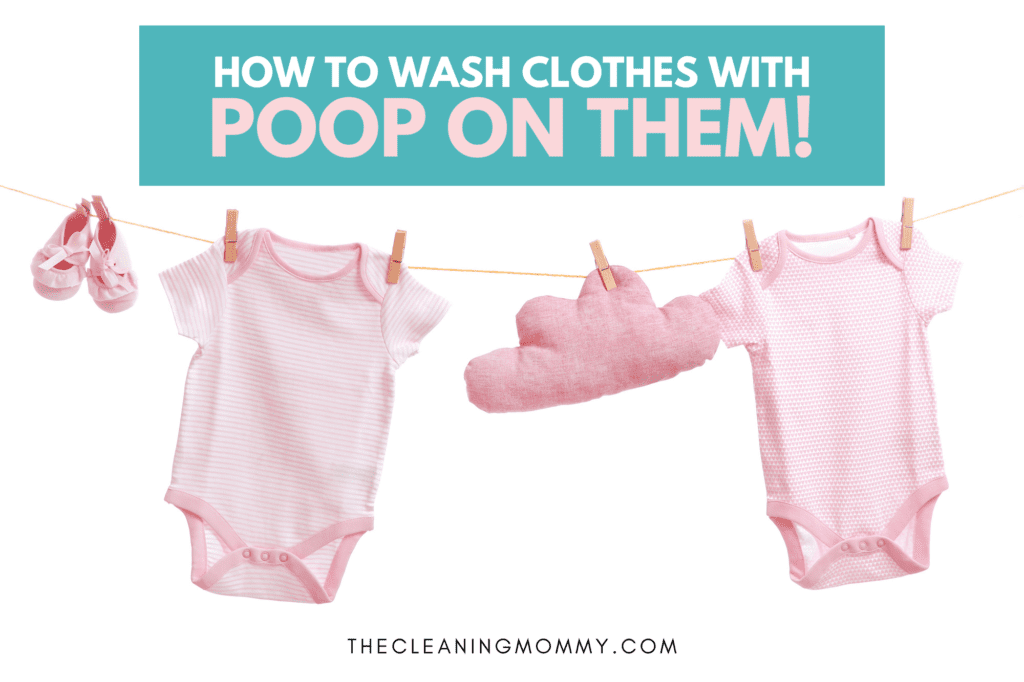
Soak:
Next, you’ll want to soak the garment in warm water for about half an hour.
Treat:
After you’ve soaked the clothing piece, you can apply an enzymatic cleaner to the affected area and let it sit for about 15 minutes. Allow the stain remover to work its magic. The enzymes will break down the proteins in the poop.
Wash:
Now you can wash your clothes in the washing machine. Simply add detergent, hot water, and bleach or white vinegar. You can set your washing machine to the ‘heavily soiled’ setting.
Again, do not wash your poop-stained clothes with your other laundry. You do not want to contaminate your clothes and allow the bacteria to spread.
Check:
Once the wash cycle has finished, you can check the fabric for any feces stains. If there are any left, you can run another wash cycle with bleach and laundry detergent. Or at this stage, you may want to chuck the clothes and go buy some cheap clothing instead lol!
Also, do a smell check. If there is no odor and the poo stains are gone, you can move on to the next step. However, if there’s still a bit of stench left, I would suggest running the items through the washing machine again while adding more household disinfectant and detergent.
Dry:
Once the stains and smell have been completely removed, you can line dry or tumble dry the clothes.
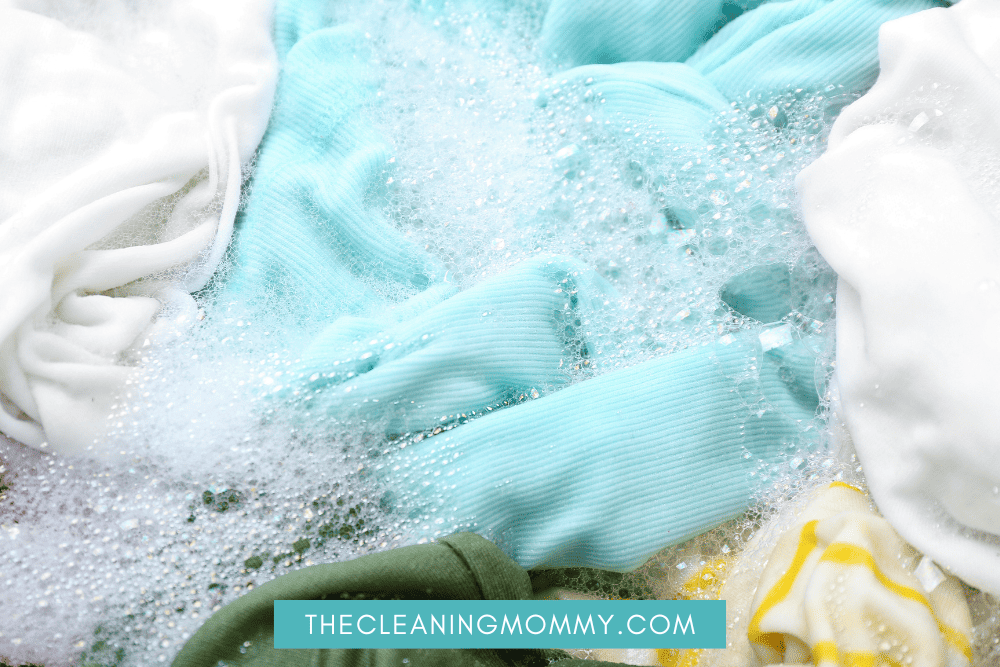
Best DIY Stain Remover
If you are looking for a great, homemade stain remover- there is nothing better than Baking Soda, Hydrogen peroxide, and Dawn to get poop stains (and most others) out of your clothes and diapers.
- Mix 2 parts hydrogen peroxide with one part each Dawn dishwashing liquid and baking soda. Feel free to make a batch as it will last for many uses.
- Use an old toothbrush or soft bristle brush to scrub to mixture gently into the fabric stain.
- Let sit for at least an hour- longer is better
- Wash hot- cool water rinse.
- Check to see if the stain is gone (repeat if necessary with a longer wait time) DO not dry if the stain is still there.
- Dry as normal.
Natural Stain Removers
If you don’t want to use any kind of chemical stain removers and prefer to go with a natural remedy for removing poop stains, there are several good enzyme based cleaners on the market.
Why Be So Concerned With Poop?
Keeping your clothes clean from poop stains is important, not only for getting rid of poop stains and the horrible smell but also mostly for hygienic reasons.
Many different types of germs, like bacteria, viruses, and parasites, can exist in feces. In fact, there are between 100 million and one billion viruses per gram of human waste. When someone gets diarrhea or viral gastroenteritis, they can excrete up to a trillion viruses per gram of stool.
That’s a lot!
While most bacteria and viruses are no cause for concern, other germs found in feces can lead to the spread of some nasty illnesses, including:
- E. coli
- Salmonella
- Hepatitis
- Typhoid fever
- Cholera
- Norovirus
- Polio
- Shigella
- Vibrio
- Tapeworms
- Giardia
- Rotavirus
Animal feces, especially if you have a cat or a dog, is also something to watch out for! Not only do you want to take care when dealing with dog poop, but you’ll also want to be sure to properly clean any fabric that has been exposed to their excrement. Animal waste is known to spread diseases like E. coli, toxoplasmosis, campylobacter, cryptosporidium, and more.
We love our pets, but we do not want a pet stain marking our stuff.
You might be wondering how long the germs from animal and human feces can survive on your clothes. Well, depending on the material, bacteria can live for several days to over six months. That’s shocking!
In most cases, however, unless someone has a disease, it’s unlikely that you will get an illness from exposure to feces. But the surest way to limit the spread of these diseases is to keep your clothes, especially your underwear, clean.
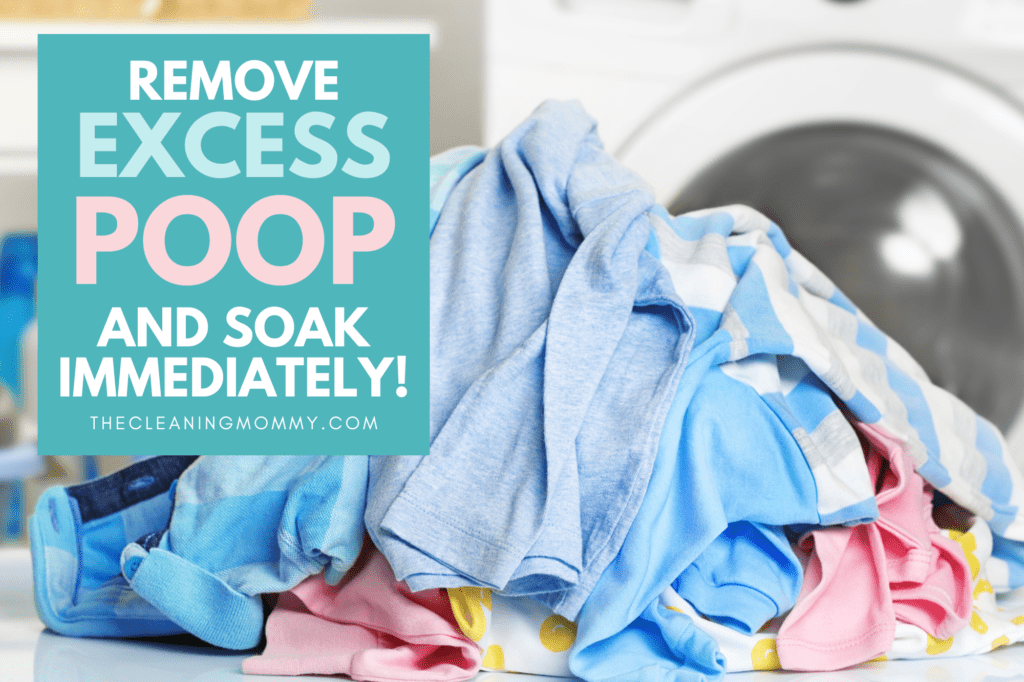
Can You Put Poopy Clothes in the Washing Machine?
Poopy laundry isn’t just gross — it can spread germs throughout the entire cycle. Though it can be okay to wash clothes with a little bit of poop on them, it’s better to play it safe and soak the clothes first.
If you do end up having to wash poopy clothing, make sure to wash it in hot water and add a little bleach to help kill off germs. But remember, warm or hot water alone won’t necessarily kill the germs; you still want to wash poop-stained clothes separately from your other clothes to avoid contamination. This will keep things a little more sanitary and will prevent feces build-up inside your machine or on your clothing.
For clothes you would normally hand wash, like stained underwear- follow suit here. You can gently scrub the stain, soak in some oxygen bleach and hand rinse.
Can You Wash Baby Poop Clothes With Other Clothes?
Okay, so now we know what to do when you get poop on your clothes, but what about poop on baby clothes?
Poop-stained baby clothes are a little different and depend on the phase that the baby is in. If your baby is still very young with milk as their primary food source, you can add your baby poop clothes with other clothes. A breastfed baby poop stain is generally very easy to clean and is no cause for concern. However, if your baby is moving to solids, you might want to treat their clothes the same as normal clothes; wash them separately using the steps mentioned above.
If your baby has diarrhea, the same ‘rules’ apply as for regular diarrhea. You do not want the germs to spread to your other laundry, so wash the poopy bundle separately from the other clothes. Remember to remove any excess poop and soak the clothes before you throw them in the wash.
If your baby wears cloth diapers, it’s best to wash all the diapers in a separate bundle. You can store the dirty diapers in a basket or pale liner in a well-ventilated area until wash day. It’s recommended to wait 2-3 days until you have enough diapers to run a full load in the washing machine.
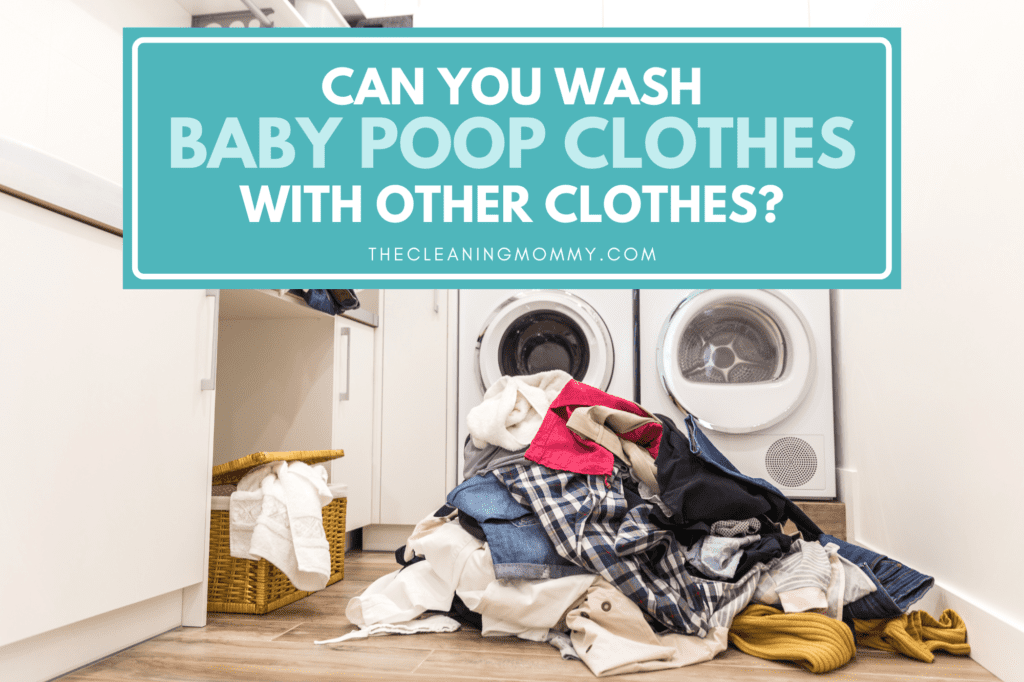
If you do decide to wash your baby’s clothes with other clothes, take note of the following: Chemicals and grease:
If you mix baby clothes with clothes that have grease on them or harsh chemicals on them, it could potentially irritate your baby’s skin.
Don’t add your delicates:
Baby clothes or cloth diapers can have velcro strips or loops that can damage or ruin your delicates.
Check the label:
It’s always good to check the manufacturer’s label to see if your baby’s clothes can be washed in the same way as your other clothing.
Watch out for dark colors:
Warm or hot water can cause dark colors to bleed, which can stain some of your other clothes.
If you are nervous about any poop or feces remaining in the washing machine, I suggest running an empty cycle on self clean, add your washing machine cleaner, and the soapy water will clean everything up.
Additional Tips
You might also find the following tips helpful when cleaning poop stains.
- Get stain treatment on ASAP. You don’t want the stain to set, so it’s important to spot treat the stain as soon as you can.
- Try dishwasher powder if you don’t have stain treatment.
- Use Chlorine Bleach (rinse twice)
- Try vinegar and lemon juice for a natural remedy
- Dry in the sun for added bleaching effect and freshness
- Sprinkle baking soda into your wash for odors
How to Wash Clothes With Poop On Them Conclusion
Poopy clothes stains can be gross and hard to deal with, but it’s important to clean poop stains properly to prevent the germs from spreading. If you use the simple steps mentioned above, you’ll be able to get your clothes germ-free, poop stain free, and smelling fresh and clean again in no time.
I hope this article was helpful and that you feel ready to tackle any poop stains that come your way with confidence. If you still have some questions feel free to reach out in the comment section. And if you’ve found this article helpful, feel free to share it with someone that could find it useful.
Happy cleaning!

Grainne Foley
Grainne Foley is a wife and mother of 2 great kids. During her 5 years of full time RV travel, Grainne learned to become very efficient at household chores, in order to make time for family adventures. Now, back in a house, she has continued to create tools and techniques to help others lighten the load of household organization and cleaning.
Other Cleaning Articles You May Like:
- How To Clean High Chair Straps
- How To Clean Bath Toys
- How To Clean Pack N Play Mattress (3 Ways)
- How To Wash Cloth Diapers For The First Time
- How To Wash A Onesie
- How to clean after being sick
- House cleaning schedule for working moms
- How to get red gatorade out of clothes
- How to clean the soles of your shoes
- How to make your own eyeglass cleaner
- How to remove mud stains from clothes
- How to remove glue stains from clothes
- How to remove detergent stains from your clothes
- Remove wrinkles from your clothes easily and without an iron!
- Discover how to get rid of the bad smell in your washing machine

Grainne Foley
Grainne Foley is a wife and mother of 2 great kids. During her 5 years of full time RV travel, Grainne learned to become very efficient at household chores, in order to make time for family adventures. Now, back in a house, she has continued to create tools and techniques to help others lighten the load of household organization and cleaning.
